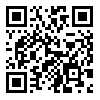Volume 12, Issue 4 (Autumn 2021)
Caspian J Intern Med 2021, 12(4): 521-525 |
Back to browse issues page
Hassan Boskabadi 

 , Gholamali Maamouri
, Gholamali Maamouri 

 , Maryam Zakerihamidi *
, Maryam Zakerihamidi * 

 , Atiyeh Mohammadzadeh Vatanchi
, Atiyeh Mohammadzadeh Vatanchi 

 , Mohammad Sokhtanloo
, Mohammad Sokhtanloo 

 , Marzieh Sadat Mousavi
, Marzieh Sadat Mousavi 

 , Sara Ghahremani
, Sara Ghahremani 

 , Fatemeh Bagheri
, Fatemeh Bagheri 




 , Gholamali Maamouri
, Gholamali Maamouri 

 , Maryam Zakerihamidi *
, Maryam Zakerihamidi * 

 , Atiyeh Mohammadzadeh Vatanchi
, Atiyeh Mohammadzadeh Vatanchi 

 , Mohammad Sokhtanloo
, Mohammad Sokhtanloo 

 , Marzieh Sadat Mousavi
, Marzieh Sadat Mousavi 

 , Sara Ghahremani
, Sara Ghahremani 

 , Fatemeh Bagheri
, Fatemeh Bagheri 


Department of Midwifery, Faculty of Medical Sciences, Tonekabon Branch, Islamic Azad University, Tonekabon, Iran , maryamzakerihamidi@yahoo.co.nz
Abstract: (4302 Views)
Background: Identification and control of the risk factors for hyperbilirubinemia can reduce the incidence and complications of this condition. Serum zinc level in newborns is reported to be one of the factors affecting the severity and incidence of neonatal hyperbilirubinemia. Therefore, the present study was conducted to compare hyperbilirubinemia incidence in neonates of zinc-taking and non-zinc-taking mothers.
Methods: In this observational study, we compared the incidence of hyperbilirubinemia during the first week of birth between newborns whose mothers had received zinc supplement during the third trimester of pregnancy (case group) with those whose mothers had not taken zinc supplement (control group). The checklist of newborns’ conditions in both case and control groups was completed based on the obtained data regarding the infants, mothers, and laboratory findings. Data was analyzed using chi-squared test and t-test.
Results: The mean serum levels of zinc were 79.76±15 mg/dl and 70.93±15.67mg/dl in mothers who had received zinc during the third trimester and those who had not taken zinc supplement, respectively. The mean serum level of zinc in newborns who underwent phototherapy was 41.68±9.21 mg/dl, while it was 68.53±20.85 mg/dl in neonates who did not receive phototherapy. In addition, 36% of the neonates whose mothers had not received zinc required phototherapy, while only 11% of newborns whose mothers had taken zinc supplement received phototherapy.
Conclusion: Zinc consumption during the third trimester of pregnancy increased the serum zinc level in both newborns and mothers and reduced the incidence and severity of idiopathic hyperbilirubinemia requiring treatment.
Methods: In this observational study, we compared the incidence of hyperbilirubinemia during the first week of birth between newborns whose mothers had received zinc supplement during the third trimester of pregnancy (case group) with those whose mothers had not taken zinc supplement (control group). The checklist of newborns’ conditions in both case and control groups was completed based on the obtained data regarding the infants, mothers, and laboratory findings. Data was analyzed using chi-squared test and t-test.
Results: The mean serum levels of zinc were 79.76±15 mg/dl and 70.93±15.67mg/dl in mothers who had received zinc during the third trimester and those who had not taken zinc supplement, respectively. The mean serum level of zinc in newborns who underwent phototherapy was 41.68±9.21 mg/dl, while it was 68.53±20.85 mg/dl in neonates who did not receive phototherapy. In addition, 36% of the neonates whose mothers had not received zinc required phototherapy, while only 11% of newborns whose mothers had taken zinc supplement received phototherapy.
Conclusion: Zinc consumption during the third trimester of pregnancy increased the serum zinc level in both newborns and mothers and reduced the incidence and severity of idiopathic hyperbilirubinemia requiring treatment.
Type of Study: Original Article |
Subject:
Pediatrics
Received: 2019/08/2 | Accepted: 2020/09/2 | Published: 2021/09/19
Received: 2019/08/2 | Accepted: 2020/09/2 | Published: 2021/09/19
| Rights and permissions | |
 |
This work is licensed under a Creative Commons Attribution-NonCommercial 4.0 International License. |

